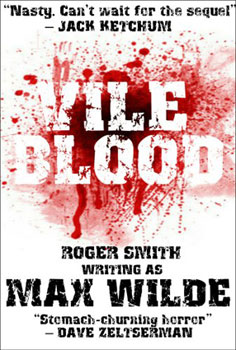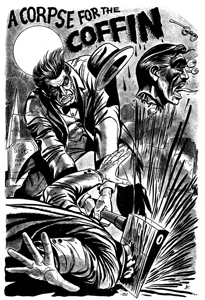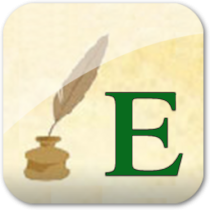 In an interview years ago the great American crime writer Donald E. Westlake talked about writing his brilliant Parker novels under the alias Richard Stark. He said that when he sat down to write as Stark he felt different. Thought differently. Wrote differently.
In an interview years ago the great American crime writer Donald E. Westlake talked about writing his brilliant Parker novels under the alias Richard Stark. He said that when he sat down to write as Stark he felt different. Thought differently. Wrote differently.
This always intrigued me and last year, when—out of nowhere—I had the glimmer of an idea for the horror novel that became Vile Blood, I knew I could never write it as Roger Smith. I needed to access another part of myself, dredge up a very different set of memories, influences and obsessions from the ones that fuelled my South African crime novels.
So Max Wilde walked in the door one day, sat down at my computer and started writing. Before dark he slipped away but he came back the next day and the next; spent months hunched over my laptop, hammering at the keyboard like a man possessed. Then he disappeared, leaving a file sitting on my hard drive. When I read those pages I was fascinated by what this other guy had jacked into and the memories that he was stirring up.
I was a kid in apartheid South Africa in the late 60s and 70s, a repressive time. The country was run by an Afrikaner Calvinist dictatorship and hand-in-hand with their sick racial policies went a suffocating Puritanism and sexual repression. Censorship was draconian, especially when it came to sex. Forget about reading D.H. Lawrence or William Burroughs or Nabokov’s Lolita. Sex scenes in Hollywood movies were chopped out with little regard to the narrative.
But violence was okay. Violence was part of South Africa’s frontier birthright, after all. So horror novels, comics and movies slipped under the censor’s radar.
 I grew up reading the American Creepy and Eerie comics, those wonderful black and white anthologies of beautifully drawn and very frightening tales in which somebody did something unspeakably evil and—more often than not—got away with it. Man, I loved those stories.
I grew up reading the American Creepy and Eerie comics, those wonderful black and white anthologies of beautifully drawn and very frightening tales in which somebody did something unspeakably evil and—more often than not—got away with it. Man, I loved those stories.
I had a cousin who worked in a movie hire store after school. (We’re talking 16mm movies here, long before the days of VHS, never mind DVD and Netflix) He’d arrive at my house at night with a projector and boxes of movie reels. We both loved horror, and we’d sneak a couple of beers and watch things like The Texas Chainsaw Massacre (the original), a memorable double feature, I Drink Your Blood and I Eat Your Skin, and many other long-forgotten B-movie masterpieces. Lurid tales of flesh eating mutants and savage serial killers carving their way through the back roads of America.
What was up on screen wasn’t that different from what I was reading about in the newspapers. In the USA this was the dark time after flower power wilted, the time of the Manson gang and Sharon Tate and Roman Polanski. Of Ted Bundy leaving a trail of dead women across seven states. Of the Zodiac Killer. Of the “Killer Clown” John Wayne Gacy massacring boys and burying them in the crawl space of his Midwestern home. All set to the ominous soundtrack of Jim Morrison crooning about a killer on the road . . .
So, even though the idea that I—this other I, this Max Wilde doppelgänger—had written a horror novel came as a shock, the story that Wilde banged out didn’t. Vile Blood is set in an unnamed town, in an unnamed state, in an unnamed country, but it is clearly an imaginary America. The America that exported a particular brand of modern terror and colonized the world with it. And though Vile Blood is contemporary, it’s a book spawned by the dark creatures dancing in the flickering lamp of a 16mm movie projector and of the wonderfully hair-raising tales that rose from the ink of those old comic books.
And Max Wilde? I haven’t seen Max for a few months but I’ve caught his scent and glimpsed something lurking in the shadows. I think he’s coming back . . .
Vile Blood is available at Amazon.





Comments are closed.